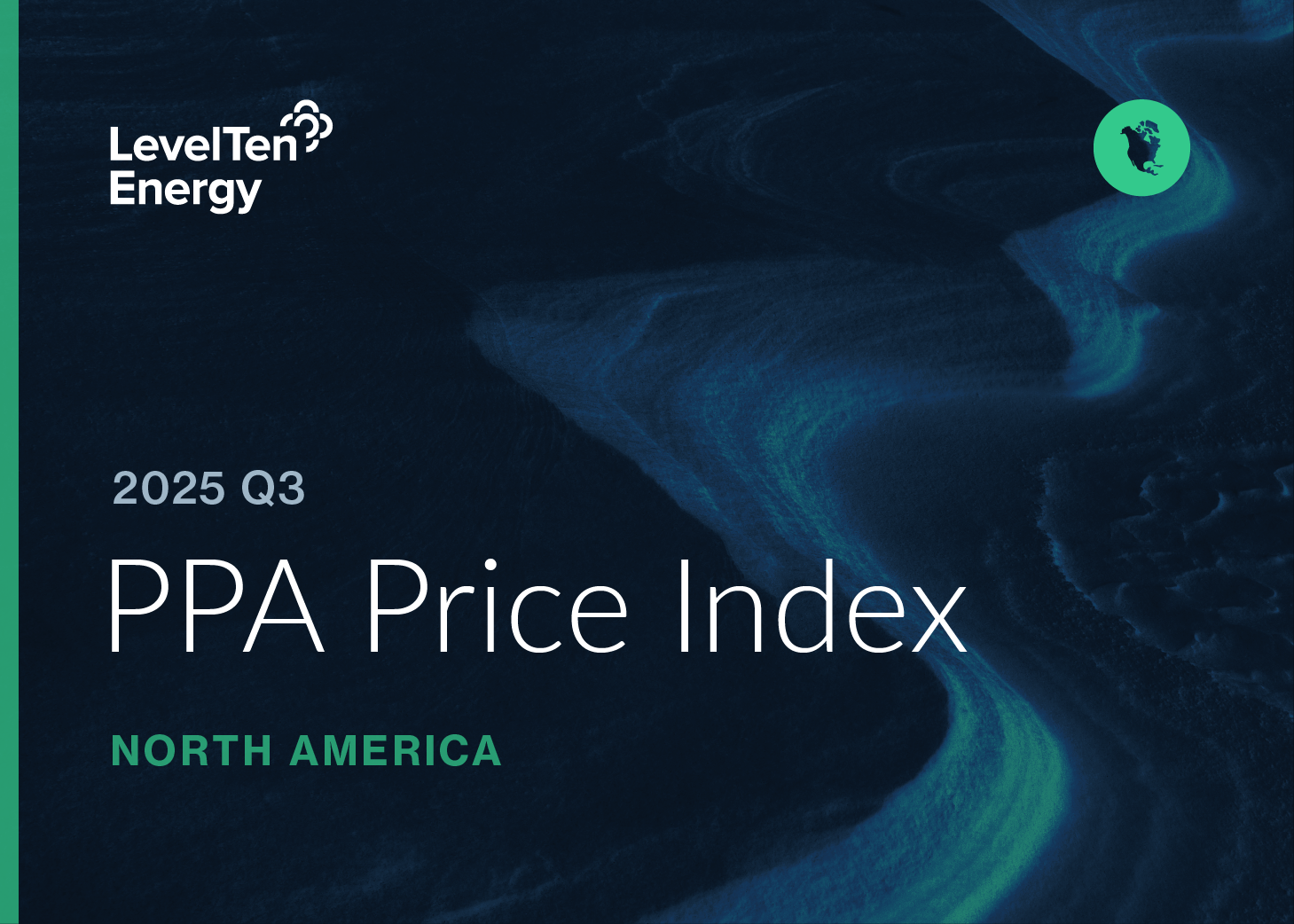LevelTen Energy’s Q3 North American PPA Price Index Report is now available for subscribers. Here are four key takeaways from this quarter’s report:
- Solar PPA Prices Rise Again
In Q3, P25 solar PPA prices rose by 5.4% across North American markets, while on a year-over-year basis, our Market-Averaged Continental Index for solar prices reveals a 10.4% rise for solar PPA prices across the continent.
The importation environment for US solar equipment continues to be top-of-mind for PV developers. As the Biden administration has rolled out policies that increase tariffs on solar cells from China to 50%, many US developers have rushed to stockpile inventories of low-cost panels from south-Asian countries like Vietnam, Thailand, and increasingly, India. US developers can avoid tariffs and potential snags around forced-labor and anti-circumvention/anti-dumping laws by sourcing domestic PV components, but such products bring a price premium. All in, these factors are placing upward pressure on solar development costs, and are almost certainly contributing to the increases in solar PPA prices occurring across US markets.
- Wind PPA Prices Stay Flat in Q3
After rising by 7% during Q2, P25 wind PPA prices in North America remained flat during Q3. But year over year, P25 wind prices on LevelTen’s PPA Price Index have gone up by 14.1%.
This stable Market-Averaged picture belies a dynamic quarter of market-specific price changes: P25 wind prices rose in two of the five markets on our Index in Q3. The wind industry is still contending with challenges around land availability, community opposition, lengthy and arduous permitting and interconnection processes, and the price pressures remaining from pandemic-era inflation. Rising insurance costs resulting from increasingly common extreme weather events are adding cost pressures, too. The US Federal Reserve’s half-point interest rate cut in September provided the first sign that relief will slowly trickle in on the capital-costs front, but rate reductions are a gradual process, and the financing pressures of higher interest rates largely remain for now.
- Tariff and AD/CVD Uncertainties Cast Long Shadows on the Industry
US solar developers have had no shortage of upstream complexities to navigate in recent years. Aside from severe supply chain disruptions during the first few years of the pandemic, multiple developments in US trade policy have created an ever-evolving environment to which solar developers have needed to continually adapt.
In May, the Biden administration updated several tariffs on Chinese PV components and removed an existing exemption for bi-facial modules. And in April, a coalition of US solar component manufacturers submitted a petition to the US International Trade Commission (ITC) seeking new duties on solar cells and modules from producers in four Southeast Asian countries that had previously been investigated and found guilty of dumping and tariff circumvention. With the Commission affirming the petition’s validity in June, the Department of Commerce will now undertake a months-long investigation that may well culminate in more tariffs for PV components from Asia. For a deep dive into the evolving regulatory landscape for US solar, download the full report.
- Political Uncertainties Loom Over the Industry
The outcome of the November presidential election will impact the energy transition in myriad ways. Industry experts are keenly focused on the future of the Inflation Reduction Act (IRA) and whether a change in administrations could lead to a repeal of some or all of its tax credit provisions.
While it is impossible to predict the election’s outcome, policy experts seem to agree that a complete overhaul of the IRA is unlikely. There is bipartisan support for the investments catalyzed by the IRA across the nation. Furthermore, policy changes would require legislation passed by a supermajority in Congress, or use of the budget reconciliation process — both of which have dependencies and typically long timelines.
Political uncertainty has slowed the development of some industries, including clean hydrogen. But it hasn't stopped the tax credit market from growing. The transferable tax credit market is expected to close an estimated $20B to $30B in deals this year. Corporations should keep in mind that renewable developers continue to heavily rely on tax credits for up to 60% of project financing, and developers are actively monetizing 2025 credits now.
Demand for Renewables High and Growing
PPA counterparties remain committed to getting more clean energy online and driving the energy transition forward. However, as the power needs of generative AI fuel a data center boom, US electricity markets are grappling with the consequences of substantially higher demand growth over the coming years. What’s more, the tech companies looking to build data centers or contract with third-party providers are aiming to hit ambitious new decarbonization goals — many of which will require clean, reliable power for such facilities at all hours of the day. This rush for capacity will add further competition for available clean energy supply from established, sophisticated renewable buyers.
Increasingly, savvy corporate buyers are integrating more tools into their sustainability strategies — like tax credit transactions that support broader procurement initiatives. LevelTen’s Tax Credit Marketplace provides buyers with access to an expansive pool of tax credits from the nation’s largest renewable developer community.
Subscribers of the PPA Price Index can log in to the LevelTen Platform to read the full report. Not a subscriber? Contact us today to get access.


.png)



